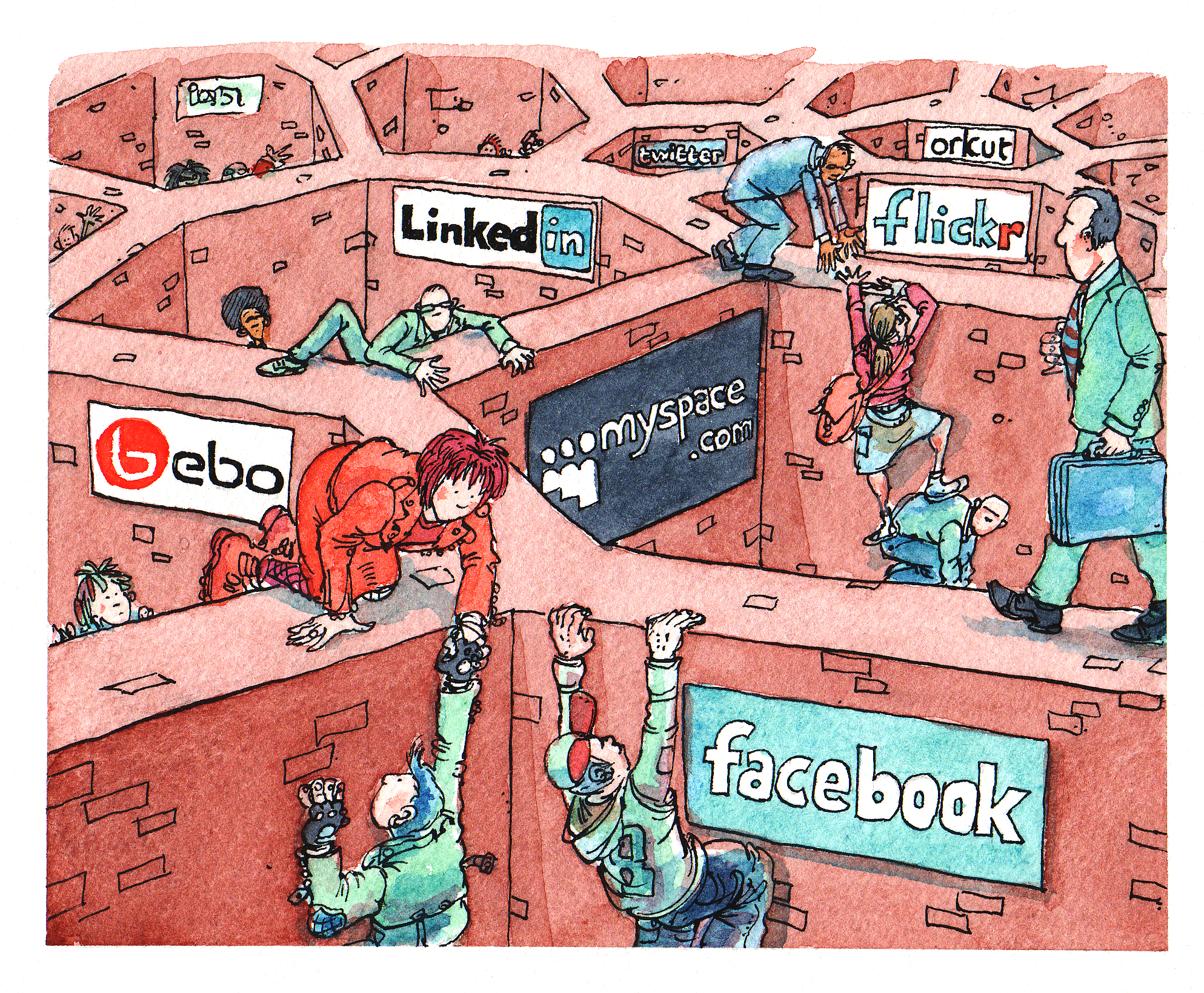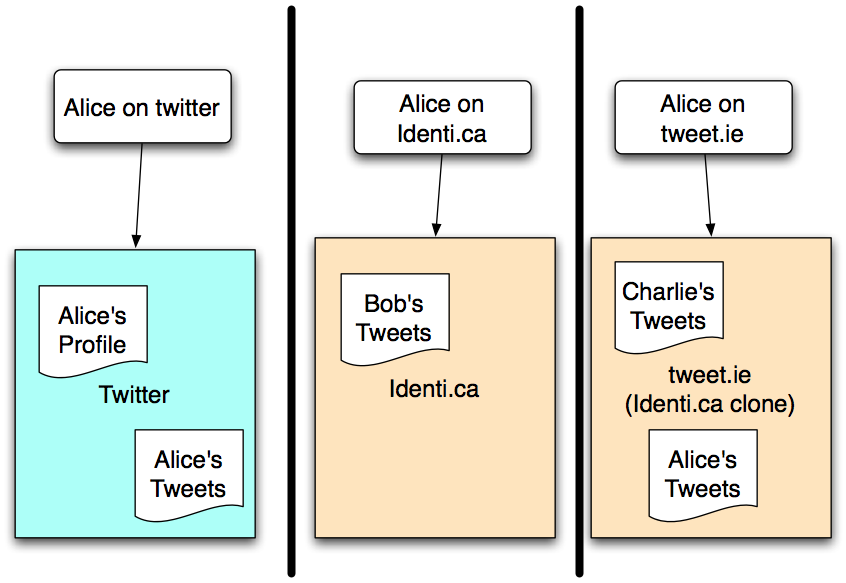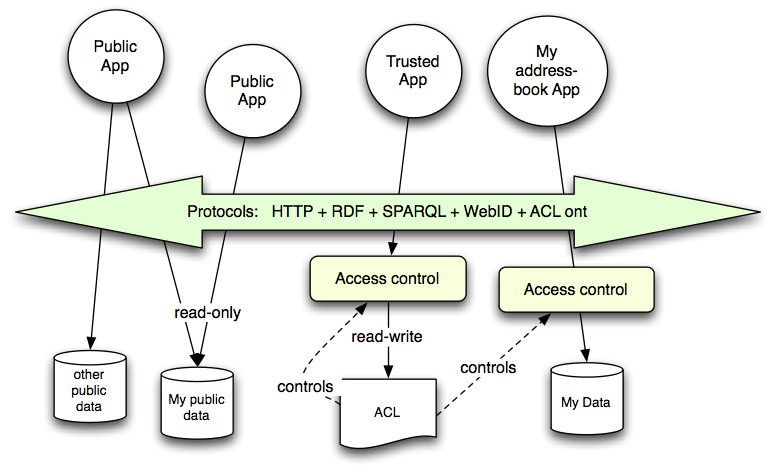Social Network Silos

Social Network Silos - 2

Breaking the silos

Building Apps

Technology
- Authentication: WebID- FOAF+SSL
- Authorization: RDF
- WebDAV
- SPARQL Update
- Widget libraries
- Application Builders
AC resources on the web
- Access control files are linked data.
- Access to ACFs for a resource is not recursively given by an ACF
for the ACF: instead, one must have "Control" access to the original
resource.
- An ontology for access control exists. @@Link
- Access control files can be edited just as other writable linked
data @@link.
- Access control files for a resource are discovered by a client using
the HTTP link header.
Web Groups
- Identified by an http: URI
- Anyone can make one
- You can refer to any group anywhere
- If you look up the URI you get a list of members of the group (RDFS Class)
- Members are referred to by WebIDs. (URIs)
- You could get some RDFS, like a subclass statement
Authorization
- The server reads the ACF (or consults a cache.) If the ACF gives
public access to the operation required, it allows it.
- It puts the client through an foaf+ssl challenge if it is not already
authenticated.
- If access is allowed to some but it is not obvious whether
the current requester is allowed, the URIs in the ACL are dereferenced,
if necessary recursively. For example a class mentioned is dereferenced
it will typically return a list of members of the class.
Issues
- Enforcing protocols
- Extending protcols
- Security in general
Conclusion
- This is just Webizing unix file system
- Building on existing technologies
- Open App market should follow
- Commodity pricing of cloud storage should follow
- Interoperable standards essential























